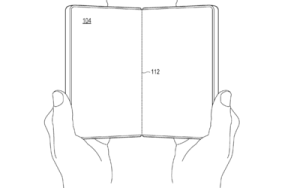Scientists have achieved a significant breakthrough in reproductive technology, successfully breeding healthy and fertile mice using DNA from two sperm cells. This innovative approach bypasses the need for an egg and any female DNA. This study is part of a larger effort to explore the possibilities of same-sex parenting and marks a remarkable advancement in the field. The resulting motherless mice not only survived to adulthood but were also able to reproduce, proving their fertility.

Image: Mice, representing the successful breeding from two fathers.
This discovery enhances our comprehension of genetic inheritance and could potentially pave the way for epigenetic programming. The research offers compelling evidence for the future potential of assisted reproduction through epigenetic techniques. The ongoing research is opening new doors for exploring same-sex reproductive patterns, holding potential applications in biomedicine and beyond, significantly expanding options for creating fertile offspring.
Published in the journal Nature, the study details how researchers successfully bred healthy and fertile mice using DNA from two sperm cells through epigenetic programming. Unlike previous attempts that resulted in weak or short-lived offspring, this study produced viable pups. The scientific achievement involved targeted editing of methylation using epigenetic programming, ensuring that the underlying DNA sequence remained unaffected.
Previously, scientists have created mice with two biological fathers through complex genetic engineering. This involved overcoming biological barriers using CRISPR-Cas editing to reprogram DNA methylation, leading to the birth of healthy mice. Out of 250 embryos, three pups survived, with two remaining healthy and fertile. This underscores the crucial role of imprinting in reproduction and demonstrates that scientists can overcome previously insurmountable biological obstacles.
Following this groundbreaking discovery, the research team is actively attempting to replicate the process with human cells. However, significant challenges remain, particularly regarding safety and clinical application.
Scientists caution that directly translating this work to humans is unlikely in the near future due to the low success rate, the necessity for numerous eggs and surrogates, and ethical considerations. Nevertheless, the study significantly advances our understanding of genomic imprinting, potentially contributing to our knowledge of infertility, embryo development, and animal conservation.
Older articles
 Popular Finance YouTuber's Account Hacked, Bitcoin Scam Promoted: Security Lessons Learned
Popular Finance YouTuber's Account Hacked, Bitcoin Scam Promoted: Security Lessons Learned
 Suryakumar Yadav Sidelines After Sports Hernia Surgery: Understanding the Injury, Recovery, and Treatment Options
Suryakumar Yadav Sidelines After Sports Hernia Surgery: Understanding the Injury, Recovery, and Treatment Options
 Ashada Gupt Navratri 2025: Unveiling Dates, Timings, Significance & Secret Rituals
Ashada Gupt Navratri 2025: Unveiling Dates, Timings, Significance & Secret Rituals
 Rishabh Pant's Triumphant Return: LSG Owner Sanjiv Goenka Hails Star's Record-Breaking Performance After Near-Fatal Accident
Rishabh Pant's Triumphant Return: LSG Owner Sanjiv Goenka Hails Star's Record-Breaking Performance After Near-Fatal Accident
 Jadeja's Test Performance Criticized: Ex-India Pacer Aaron Slams Inconsistent Bowling in England Loss
Jadeja's Test Performance Criticized: Ex-India Pacer Aaron Slams Inconsistent Bowling in England Loss
 Microsoft Aims for Foldable Redemption with Novel Hinge Design to Rival iPhone and Android
Microsoft Aims for Foldable Redemption with Novel Hinge Design to Rival iPhone and Android
 Hollywood's Love Affair with India: Iconic Film Locations Revealed
Hollywood's Love Affair with India: Iconic Film Locations Revealed
 India vs. England: Team Preps for Second Test as Bumrah's Absence Raises Workload Management Questions
India vs. England: Team Preps for Second Test as Bumrah's Absence Raises Workload Management Questions
 Shubman Gill's Captaincy Under Fire: Bold Calls Needed After England Test Defeat
Shubman Gill's Captaincy Under Fire: Bold Calls Needed After England Test Defeat
 6 Yoga Poses to Naturally Support Thyroid Function and Hormonal Balance
6 Yoga Poses to Naturally Support Thyroid Function and Hormonal Balance